I have been told to give my baby as much milk as he wants when he wants.
Does this sound like a good idea?
Feeding responsively when your baby is showing feeding cues, and not watching the clock, is the approach advocated for breastfed babies. This is because they will regulate supply through feeding and of course we don’t know how much they are getting at each feed.
But is this such a good idea with bottle fed babies? Feeding on cue with them, rather than on a schedule, will avoid distress due to thirst and hunger. After all as adults we don’t delay our next cup of coffee because it is only two hours since the last one do we? But do bottle fed babies regulate their intake in the same way as breastfed babies? The answer is 'no'. Bottle fed babies are reliant on their care givers who may over estimate what they actually need. As parents it takes time to understand what your baby is telling you because they cannot talk. We all get it wrong.
Flow during a breastfeed will vary. It takes on average two minutes for a baby to trigger the let down. So at the very start of a feed flow is slow, then baby gets the gush of the let down, then after a few minutes flow slows again. If baby continues to suckle there will be a second let down and gush, although this second let down won’t be so forceful and so on. Some babies may feed through multiple let downs before ending a feed. But the periods where the flow ebbs provide an opportunity for baby to decide is he has had enough. If he has he will do a period of non-nutritive or ‘comfort’ sucking to settle himself. Babies cannot soothe themselves and suckling on a breast is a very natural and convenient way to drift off to sleep.
We don’t see these changes in flow on a bottle. One suck on a teat and most babies will have a mouthful of milk and the race is then on to keep up with that flow! Left to it many babies will down a full feed in around 5 minutes, compared to the average breastfeed length of 20-40mins (for babies under 12 weeks old). Then the bottle is empty. Now what? He needs soothing to settle so he cues to suckle. He must be hungry then so let's put more milk in the bottle. This will work as eventually baby will be so full he will fall asleep. That is if he isn’t sick first! Most of us will recognise the satiated to 'the point of discomfort' feeling after over indulging in food when all you want to do is take a siesta. But is it healthy to feed to excess repeatedly? 'No'.
There is also the pressure that parents feel to have their baby gaining weight. When announcing our baby’s arrival what does everyone want to know? How much they weighed. We are a bit obsessed with weight in babies. In the eariy days there can certainly be legitimate concerns about weight loss and weight gain. This can cause a lot of anxiety for parents and much of that comes down to the way these concerns are communicated with parents by healthcare professionals. My own expereince is that far too many midwives, HVs and GPs lack skills in infant feeding assessment and support so when they see a baby with weight loss or slow gain they struggle as much as parents do to understand why and how to manage the problem appropriately. Their anxiety transfers to parents. Panic sets in and the professional's ‘go to’ plan involves large volumes of formula as they need to 'fix' the problem and quickly. This will put weight on the baby for sure, but it doesn’t explain or address the reasons for the weight issues in the first place. It isn’t a long term solution. But it can set up a long term problem with parents encouraging their baby to ‘just take a bit more’, ‘just finish this extra ounce’, due to fear of the next weight in!
Another factor which can lead to overfeeding when bottle feeding is the lack of leptin in formula. Leptin is a hormone that is believed to help control appetite and is secreted in breastmilk so likely aids baby’s in regulating their intake. Babies having formula do not have exposure to this helpful hormone.
So how do we avoid overfeeding?
Respond to baby’s cues and not the clock. Babies up to 12 weeks old will feed around 8 times per day (up to around 12 times if fully breastfed). Intervals between feeds will vary from a few minutes during cluster feeding (typically seen in the evening) to 6 hours. The amount of milk taken at each feed will vary too as sometimes babies need a snack and sometimes a 3 course dinner!
Pace feed bottles using a slow flow teat. This involves holding baby in an upright seated position, with head free to tilt back, and holding the bottle almost horizontal so milk fills the shaft of the teat and lower part of the teat base but the is an air gap in the upper part of the teat. Flow is paused at regular intervals throughout the feed (about every minute or when baby seems to be getting overwhelmed by flow). Flow can be paused by tilting the bottle teat up into the roof of the mouth or removing the teat from the mouth. Resume flow when baby starts wanting to suck again.
At the end of bottle feeds assist baby to settle by offering the breast if you are combi feeding, or rocking, carrying, giving baby your finger to suck on or using a dummy (if you choose to), rather than offering more milk.
Use these full feed volumes as a guide to appropriate amounts to give at different ages.
Typical full feed volumes for babies at different ages are:
Day 3 20-30ml
Day 4 30-40ml
Day 5 40-50ml
Day 6 50-60ml
Day 7-10 60ml
Day 10-21 60-90ml
Day 21-28 90-120ml
6-8 weeks 120mls
By week 12 some babies may be taking up to 150-180ml at some feeds.
Your baby will tell you when they are ready for a bit more.
Remember a top up after a breastfeed feed will only be a quarter to a half of these volumes as it should not be a full feed if milk has already been taken by baby from the breast.
You wouldn’t allow a toddler to eat an entire chocolate cake. So we shouldn’t have professionals telling parents to allow babies who are bottle fed to ‘take what they want’.






